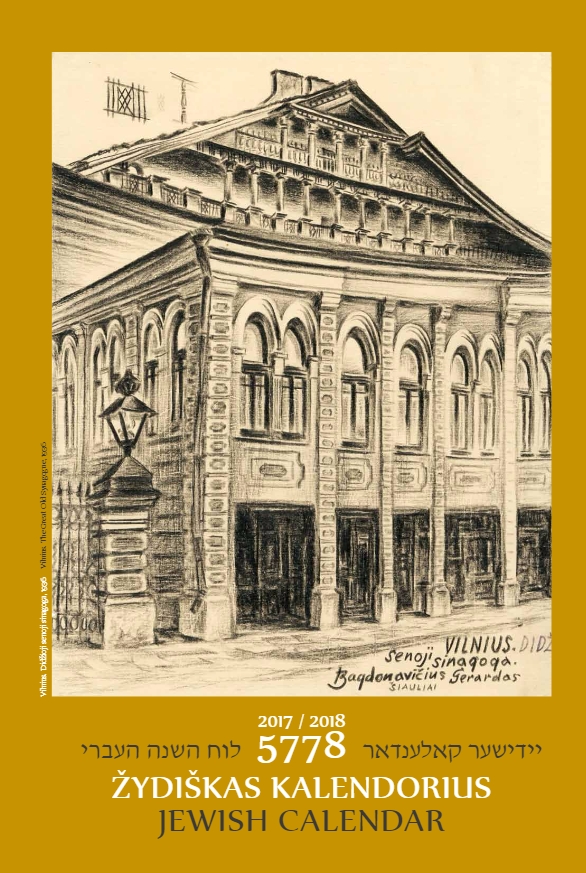
The new calendar for the Jewish year 5778 published by the Lithuanian Jewish Community features graphic representations of the synagogues of Lithuania in the drawings by Gerardas Bagdonavičius.
Bagdonavičius (1901-1986) was an artist working in drawing and painting, an illustrator, a theater designer and teacher. His legacy, a corpus of more than 4,000 works, is preserved at 11 Lithuanian museums, with the majority at the Aušra Museum in Šiauliai, the collection to which the illustrations in the new calendar belong.
Of the hundreds of synagogues once gracing the Lithuanian landscape, only several dozen remain. There were more than one hundred synagogues in Vilnius alone before the Holocaust. Currently 44 synagogues and synagogue complexes are listed on the registry of Lithuanian cultural treasures. The majority have disappeared forever, in many cases leaving us no picture of how they looked. The Bagdonavičius drawings of synagogues featured in the calendar are a rich source of information, drawings he made during different ethnographic expeditions in the period between the two world wars.
Only two of the synagogues portrayed in the calendar are still standing: the synagogue of the Chaim Frankl leather factory in Šiauliai and the synagogue in Pakruojis. The latter belongs to the LJC with whom the Pakruojis regional administration has a use agreement. It was only reopened to the public in the spring of 2017 after extensive renovation over several years. It is the first wooden synagogue restored after the Holocaust in Lithuania.
Renovation work is being performed on three more synagogues which belong to the LJC: the Choral Synagogue in Vilnius, the Zavl kloyz on Gėlių street in Vilnius and the wooden synagogue in Žiežmariai.

